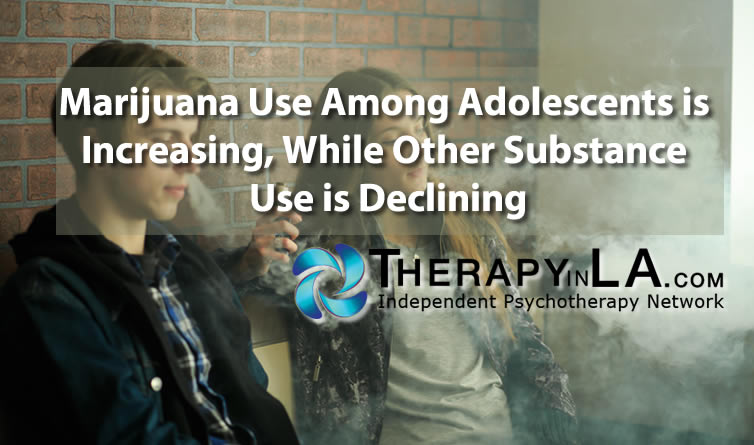Marijuana Use Among Adolescents is Increasing, While Other Substance Use is Declining
Marijuana Use Among Adolescents is Increasing, While Other Substance Use is Declining
A recently released survey by the National Institute on Drug Abuse (NIDA) has revealed that teenagers are vaping marijuana and nicotine with much greater frequency, in contrast to reduced alcohol use, cigarette smoking, and use of hard drugs (https://www.nytimes.com/2019/12/18/health/teen-drug-use.html ). This is a yearly study of 8th, 10th, and 12th graders: Monitoring the Future survey.
A few key findings:
- Among 12th graders, 14% reported vaping marijuana in the previous month, compared to 7.5% a year earlier.
- Vaping marijuana in the previous year basically doubled for all three groups to 7% for 8th graders, 19.4% for 10th graders, and 20.8% for 12th
- Daily use of marijuana was reported by 3.5% of 12th graders, and 3% of 10th This was the first year this question has been asked, so there is no comparative data.
- E-cigarette use was reported by 25% of 12th graders, as well as 25% of 10th
Vaping of marijuana was the source of life-threatening emergencies in the summer of 2019: 2,000 people were unable to breathe due to a lung infection caused by vaping. Many of these people were in their teens and twenties. Many of them had vaped THC, the psychoactive agent in marijuana. Overall, the Center for Disease Control (CDC) reported 2409 cases of people being hospitalized due to vaping, with 52 people dying. It seems likely that oils used in the black-market marijuana may be impacting the lungs.
Alcohol use in the past year dropped to 52% for 12th graders, compared to 73% in 2000. For 10th graders, the figure was 37%, compared to 65% in 2000. Cigarette use also dropped to 5.7% for 12th graders, compared to 13.6% in 2014. Painkiller use has also declined. “A multifaceted effort in the US to discourage drug use, including stricter school penalties, smoking bans and general public awareness campaigns” all seem to be having some helpful impact.
With vaping marijuana, the wrong message seems to have spread among adolescents: that it’s not harmful. The “cool factor” may also play a part in the newer technology in use; the popular JUUL device is sometimes called the “iPhone of e-cigarettes.”
From a more psychological perspective, a question is clear: what makes this vaping so attractive, even compelling perhaps? The “cool factor” and peer influences operate in these choices, of course, And, as with the previous blog on food, it’s likely there is powerful relief that people experience from this use of marijuana, or other substances. “Saying No”/abstaining, is no simple matter, unless alternative ways of relieving tension are developed. Longer-term, the underlying sources of this persistent tension or stress have to be identified and addressed. Once abstinence is established and maintained for some initial period of time, this is a psychotherapy focus that is very much needed, and often very beneficial.
Dr. Alan M. Solomon is a clinical psychologist in private practice in Torrance, CA. A member of the Independent Psychotherapy Network, he can be reached at dralanms@gmail.com or (310) 539-2772.
Copyright 2020 by Alan M. Solomon, Ph.D.

